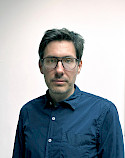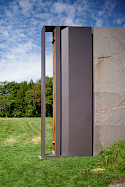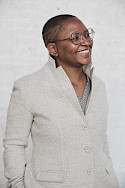Instead of “sound art,” say: abrasion, a dirge, willed from the other side of a leaky room, undisciplined, celebrative, dangerous, always emerging.
An 8-part Podcast by Bill Dietz
In conversation with Budhaditya Chattopadhyay, Nikita Gale, Jennie C. Jones, Aurélie Nyirabikali Lierman, Benjamin Piekut, Marina Rosenfeld, Lauren Tosswill, & Hong-Kai Wang
Since the beginning of 2023, Overtoon - Platform for Sound Practitioners has been in transition. The period has been an occasion for reflection, not just on the history of the organization, but also on the past, present, and future of the field. What is “sound art” today? What do “sound artists” need today? What can be the functions of a space dedicated to the support and mediation of “sound arts?”
I think we need to question whether or not 'Sound Art' constitutes a new art form. [...] It’s as if perfectly capable curators in the visual arts suddenly lose their equilibrium at the mention of the word sound. These same people who would all ridicule a new art form called, say, "Steel Art" which was composed of steel sculpture combined with steel guitar music along with anything else with steel in it, somehow have no trouble at all swallowing 'Sound Art.' [...] In art, the medium is not often the message. [...] Much of what has been called 'Sound Art' has not much to do with either sound or art.
- Max Neuhaus, first published as an introduction to the exhibition, “Volume: Bed of Sound,” P.S.1, New York, July 2000
These lines from Max Neuhaus, an originator of what is commonly referred to as “sound art,” highlight a fundamental instability within the notion of the field as such. 24 years later, at a moment when “sound art” seems to be both more and less of a discipline (in Europe, an often publicly funded art form, or in North America, an un- or underfunded niche), Neuhaus’s lines still ring true. What can and should be done with “sound art” as concept, genre, & category today?
Starting February 15th, 2024, Overtoon presents a podcast hosted by Bill Dietz reflecting on the state of “sound art” in dialogue with 8 international artists and theorists.
The title of the eight-episode podcast, Instead of “sound art,” say: abrasion, a dirge, willed from the other side of a leaky room, undisciplined, dismantling itself continually., is assembled from remarks made by contributors, all of whom have a complicating, at times even antagonistic, relationship with “sound art.”
Eschewing the neutral, nowhere sonic space of many podcasts, each episode of Instead of “sound art”... is accompanied by a virtual audio background montage of field recordings by Bill Dietz and Bryce Hackford.
Credits
All conversations co-recorded remotely between Bisbee, Brooklyn, East Orange, Hudson, Ithaca, Liverpool, Los Angeles, Rotterdam, and Taipei.
Design by OSP (Open Source Publishing)
Audio Intro and Audio Edits by Bill Dietz
Virtual Audio Backgrounds by Bill Dietz and Bryce Hackford
Audio File Preparation by Bryce Hackford
Administrative Support by Otis Dehaes
With deepest gratitude to all of the participants!
& everything always thanks to Khalil R. West
from the other side
Nikita Gale
Nikita Gale is an artist living and working in Los Angeles, California and holds a BA in Anthropology with an emphasis in Archaeological Studies from Yale University and earned an MFA in New Genres at UCLA. Gale’s work explores the relationship between materials, power, and attention. A key tenet of the artist’s practice is that the structures that shape attention determine who or what is seen, heard, recorded, remembered, and believed. Gale’s practice examines the ways in which silence, noise, and visibility function as political positions and conditions. Gale’s broad-ranging installations – often comprising concrete, barricades, video and automated sound and lighting – blur formal and disciplinary boundaries, engaging with concerns of mediation and automation in contemporary performance. By approaching reproduction as a mechanism that connects humans to a desire for extension and amplification through both biological and industrial processes, the artist’s work points to the ways that technology not only functions as an extension and amplification of the body but also as a means by which labor and violence are displaced and concentrated.
The artist’s work has recently been exhibited at Chisenhale (London); LAXART (Los Angeles); 52 Walker (New York); MoMA PS1 (New York); Kunstraum Kreuzberg (Berlin); Swiss Institute (New York); California African American Museum (Los Angeles); Cubitt (London); The Studio Museum in Harlem (New York); and in “Made in L.A. 2018” at the Hammer Museum (Los Angeles). Gale is represented by Petzel (New York), 56 Henry (New York), Commonwealth & Council (Los Angeles), and Reyes | Finn (Detroit). Gale’s work has appeared in numerous publications including The New York Times, Texte zur Kunst, Artforum, Mousse, Art in America, Art21, AQNB, Frieze, Vogue, and Flash Art. Nikita is a Contributing Editor at Triple Canopy, a magazine and publishing platform based in New York City and formerly served on the board of directors of GREX, the west coast affiliate of the AK Rice Institute for the Study of Social Systems.
a leaky room
Budhaditya Chattopadhyay
Budhaditya Chattopadhyay is a contemporary artist, researcher, and writer. Chattopadhyay produces works for large-scale installations and live performance addressing contemporary issues of environment and ecology, migration, race, and decoloniality. His works have been widely exhibited, performed, or presented across the globe. Chattopadhyay has an expansive body of scholarly publications in artistic research, media theoryand aesthetics in leading peer-reviewed journals. He is the author of four books: The Nomadic Listener (2020), The Auditory Setting (2021), Between the Headphones (2021), and Sound Practices in the Global South (2022). Chattopadhyay holds a PhD in Artistic Research and Sound Studies from the Academy of Creative and Performing Arts, Leiden University, and is currently a Visiting Professor at the Critical Media Lab, Basel, Switzerland.
undisciplined
Benjamin Piekut
Benjamin Piekut is a historian of music and performance after 1960. The author of Experimentalism Otherwise: The New York Avant-Garde and its Limits (2011) and Henry Cow: The World Is a Problem (2019), he is also the editor of Tomorrow is the Question: New Directions in Experimental Music Studies (2014) and co-editor (with George E. Lewis) of the Oxford Handbook of Critical Improvisation Studies (2016). He is a professor of music at Cornell University.
a dirge
Jennie C. Jones
Jennie C. Jones (b.1968) was born in Cincinnati, OH and lives and works in Hudson, NY. Her interdisciplinary practice seeks to engage viewers visually and aurally. Drawing on painting, sculpture, sound, and installation, Jones’s conceptual works reflect on the legacy of modernism and minimalism. Their unconventional materials and reductive compositions highlight the perception of sound within the visual arts.
After graduating from Rutgers University’s Mason Gross School of the Arts in 1996 with her MFA, Jones created a series of drawings and collages that directly reference music and listening technologies. Elaborating on these drawings, in the 2000s, Jones began to use acoustic ephemera (cables, noise-canceling instruments, CD jewel cases, etc.) in her artwork—what she has referred to as the “physical residue of music.” Transforming these prosaic materials into elegantly spare sculptures and installations, looping cables so that they became graphic lines, she adopted the conceit of sculpture as drawing in space. Further articulating the relationship between sound and physical matter, Jones’s ongoing series of Acoustic Paintings incorporate noise-absorbing acoustic panels. The minimalist works juxtapose these panels with solid and two-tone expanses of color, and draw on imagery that recalls the geometry of musical notation, including bars, crescendos, and measures. More recent Acoustic Paintings interact with the architecture of the spaces they inhabit, escaping the confines of the wall and becoming sculptural as they engage with the floor. Encouraging viewers to anticipate sound even in the quietest of environments, Jones states that the acoustic panels in the paintings are always “active.” As she explains, “I always say they’re active even when there’s no sound in the room; they are affecting the subtlest of sounds in the space—dampening and absorbing even the human voice.” Seamlessly integrating visual practices with auditory ones, the works underscore the connection between minimalism and music, recovering the legacy of the Black avant-garde.
In 2024, Jones was announced as the artist selected for the final chapter of The Metropolitan Museum of Art’s Roof Garden Commission, producing her first multi-work outdoor sculptural installation for the Museum’s Iris and B. Gerald Cantor Roof Garden in 2025. Jones’s solo exhibitions include “Jennie C. Jones: Dynamics,” Solomon R. Guggenheim Museum, New York, NY (2022); “Jennie C. Jones: Constant Structure,” The Arts Club of Chicago, IL (2020); “Compilation,” Contemporary Arts Museum Houston, TX (2016); “Absorb/Diffuse,” The Kitchen, New York, NY (2013), among others. Jones’s work is in the collections of the Hirshhorn Museum and Sculpture Garden, Smithsonian Institution, Washington, D.C.; Los Angeles County Museum of Art, CA; The Museum of Modern Art, New York, NY; Pérez Art Museum, Miami, FL; Philadelphia Museum of Art, PA; Solomon R. Guggenheim Museum, New York, NY; The Studio Museum in Harlem, New York, NY; Walker Art Center, Minneapolis, MN; Whitney Museum of American Art, New York, NY; and Yale University Art Gallery, New Haven, CT, among others. She is the recipient of numerous awards, including the Anonymous Was A Woman Award (2017); Rose Art Museum, Ruth Ann and Nathan Perlmutter Artist-in-Residence Award (2017); Robert Rauschenberg Award (2016); Joan Mitchell Foundation Grant (2013), among others.
Jones is represented by Alexander Grey Associates.
celebrative
Aurélie Nyirabikali Lierman
Aurélie Nyirabikali Lierman is a Belgian-Rwandan composer, radio and vocal artist.
Pioneer of Afro-European radio art and musical theatre, whose work has been described as bold, provocative and delicate.
She brings unique stories to life in an accessible and at the same time innovative way: based on acoustic sounds and soundscapes that she moves around like a kind of 3D cinema, but for the ears. She records all the sound recordings in her work herself during her many field recording expeditions to East-Africa.
She is currently touring with Umva! an intimate ode to Kanyoni Ladislas, her 113-year-old grandfather and one of the last traditional doctors and hunters in Rwanda.
She collaborates with other artists in a variety of disciplines and fields and has won many prizes at home and abroad. As a composer-vocalist she will perform in Mutability, a large-scale 6 hour multi media project by Yannis Kyriakides at the Holland Festival (premiere June 23rd 2024, Amsterdam). And BBC Radio 3 granted her carte blanche for a brand-new tape composition (on air premiere September 2024).





